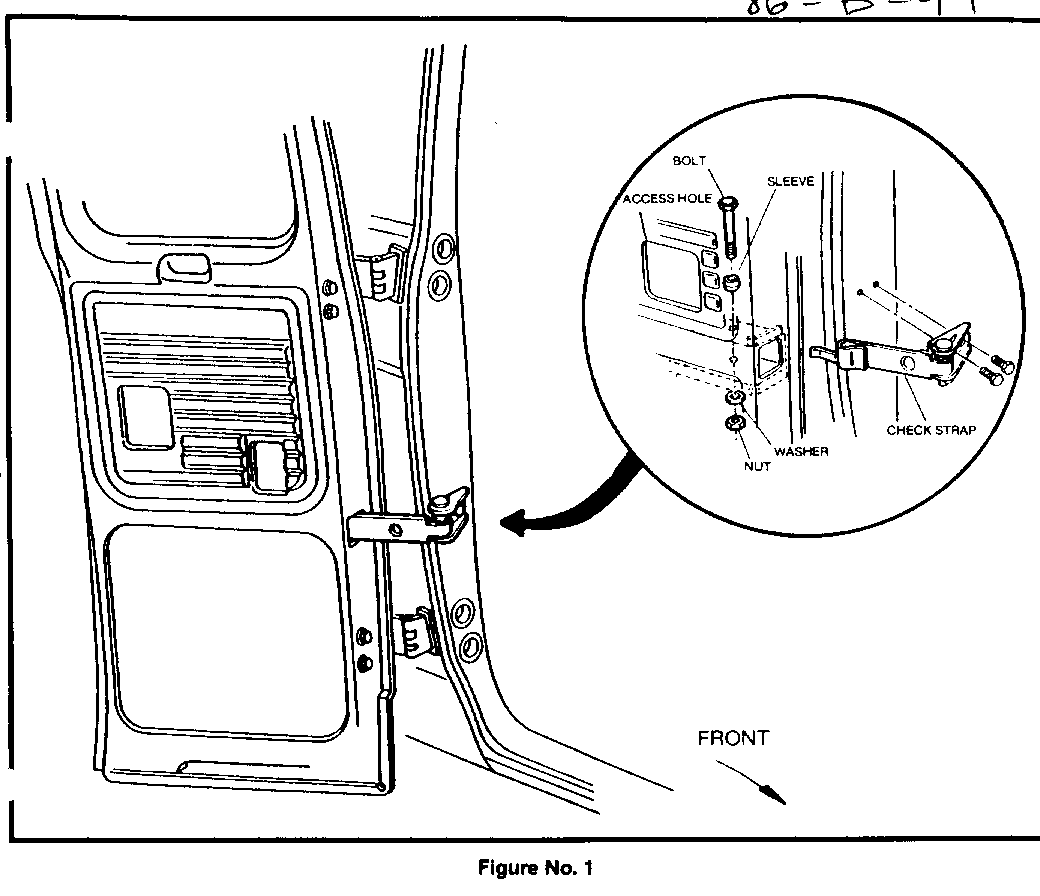SWING-OUT SIDE CARGO DOOR CONTACTS BODY WHEN OPENED

Model and Year: 1984-86 G VANS EQUIPPED WITH SWING-OUT SIDE CARGO DOORS
TO: ALL CHEVROLET DEALERS
The door check strap on 1984-86 G Vans equipped with RPO E24, swing-out side cargo doors, was designed with a detent position at 90 degrees. However, the detent on some door check straps may be inoperative and permit the cargo door to travel beyond 90 degrees and contact the body of the vehicle. To address this condition, a new side door check strap that restricts the travel of the cargo door to 90 degrees has been released. If door travel beyond 90 degrees is required, the check system can be disengaged to permit full 160 degrees door travel. The instructions for disengaging the check system are on a label affixed to the check strap.
The service procedure and parts required to modify the swing-out side cargo door are as follows:
PARTS INFORMATION
PART NUMBER DESCRIPTION QUANTITY ------------ ------------ -------- 15544573 Check Strap-Rear Door 1 15544575 Check Strap-Front Door 1 189304 Bolt (3/8 x 16 x 3/4) 2 9439862 Washer-Flat 2 305322 Sleeve-Brass 2 9422297 Nut-Lock 2
SERVICE PROCEDURE (REFER TO FIGURE NO.1)
1. Remove the door trim panal and door handle escutcheon if equipped.
2. Using the access hole in the door, remove and discard the plastic retainer pin securing the door check strap.
3. Remove the two 7/16" bolts securing the strap to the pillar. Discard the strap.
4. Insert the 3/8" bolt with brass sleeve against the bolt head into the door. Secure with flat washer and lock nut. Snug nut without collasping door reinforcement.
5. Insert the check strap into the door and then attach to the pillar using the existing two bolts. Torque bolts 9-13 N.m (7-10 ft. lbs.).
6. Check door for smooth operation. Lubricate strap with Lubriplate P/N 1052196 or equivalent if required.
7. Reinstall door trim panels.
8. Repeat on opposite door.
Repair time for completing this procedure on both doors is .5 hour, if the vehicle has interior trim panels and .3 hour without trim.

General Motors bulletins are intended for use by professional technicians, not a "do-it-yourselfer". They are written to inform those technicians of conditions that may occur on some vehicles, or to provide information that could assist in the proper service of a vehicle. Properly trained technicians have the equipment, tools, safety instructions and know-how to do a job properly and safely. If a condition is described, do not assume that the bulletin applies to your vehicle, or that your vehicle will have that condition. See a General Motors dealer servicing your brand of General Motors vehicle for information on whether your vehicle may benefit from the information.
